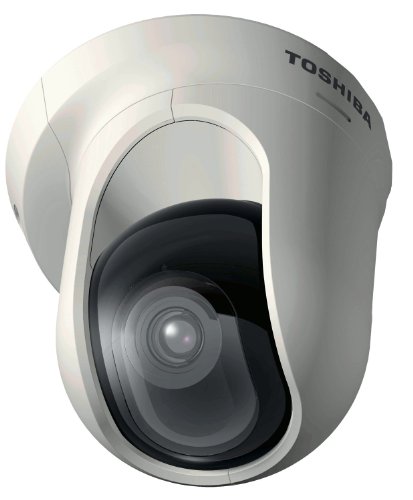
IP CAMERA, POE OUTDOOR BULLET
AirCam: Breakthrough Price/ Performance IP Camera Product Line
The AirCam line of H.264 megapixel cameras combine advanced industrial design, powerful performance with market leading cost-effectiveness.
Wall Mount/Ceiling Mount
30 FPS
1MP/HDTV 720p
4.0mm / F1.5
Powered through Ethernet
Airvision Datasheet
Airvision Userguide
AirVision Windows
AirVision NVR Windows
AirVision v1.0.2 Ubuntu 11.04
Ubiquiti Aircam H.264 Megapixel Indoor/Outdoor IP Camera 3 Pack






Limited features, but better than average image quality.,
These are technically 0.92 megapixel cameras (1280×720, a.k.a. 720p HD). It supports 30 frames-per-second video even at full resolution, which is great. The shutter is fast, so moving objects have little or no blurring.
I personally own 3 of these cameras, but they have several limitations that keep me from buying more:
1. The firmware is pretty bare-bones, as Ubiquiti intends for you to use the cameras with their (free) AirVision software. At this time, AirVision is highly inefficient and buggy, but they are working on it. Right now, Blue Iris is a better option for recording the video feed. Advanced features like motion detection, video recording, email alerting, or even scheduled FTP image uploading are simply not possible without a server. Basically the only output you get is h.264 video in an RTSP stream.
2. If you were thinking about using this camera for HD jpeg images, think again. Jpeg still images are only available after logging in through the proprietary web interface. So most 3rd party software will be unable to access the images. Even if you can access them, the images are only available at 640×480 resolution (so much of the detail is gone). If you need a camera with jpeg image support, look elsewhere.
3. There is NO night vision support (though I find that a motion-activated spotlight works okay).
Despite these limitations, you simply cannot beat the video quality for the price with another outdoor camera. For INDOOR cameras, however, Edimax has some strong competetors with much nicer firmware features and more pixels.
Was this review helpful to you?

|It’s OK,
This camera takes a slightly different approach to IP cams. It is supposed to be megapixel, but it’s really not. Let me explain, the camera has very decent image quality, but it is very similar to a normal VGA Axis camera in that regard. If you compare it to an Axis MP camera it is nowhere near the quality. That being said, at the price that this goes for and the fact that it is indoor/outdoor, it is a winner. The software that is included is clumsy, you’re better off using Blue Iris. You must run some sort of NVR software to record with this camera, as unlike many other IP cams, there is no FTP server included. If you are looking for decent image quality and you pair with Blue Iris, you can’t go wrong with this package for the price. I will have to see how it holds up over time.
Was this review helpful to you?

|Low price, low quality video, complex software to use, no IR,
I bought this 3 pack here in amazon.com and I am pretty impressed with the physical product. I have had them for a couple of weeks now and this is what I’ve learned.
The packing and the design are great. For the amount of features these cameras have, I would have expected to pay much more. These cameras work great in well lit rooms but are completely useless in dimly lit rooms, also the Airvision software is designed for use by programmers (or in my opinion, the Linux crowd). I hear the Airvision software is based on Zone Minder, which is open source.
I ended up buying the Blue Iris software after I read about people mentioning how easy it was to use. One thing I’ll say about Blue Iris is, that for recording in Xvid format (which I’ve found to be the best compromise between quality/size/readability) it is VERY resource consuming. To record from 3 cameras simultaneously at the maximum resolution @ 30fps will bring a Quad Core AMD CPU @ 3.3Ghz to its knees. I don’t believe the Airvision software shares this problem unless you enable motion detection (which I have disabled, since I have enough storage to record 24/7 anyway). Another thing I really like about the cameras is that they do not need PoE splitters. Coming from the older Panasonic VGA IP cameras that use PoE splitters after the power injectors, they are a definite improvement.
I found the video quality these cameras put out to be heavily compressed and very soft. My older panasonic VGA IP cams can put out sharper images than these. The motion in the videos is very smooth if you record at 30fps. But the videos are NOT sharp at all. Too soft for head shots of people if you’re running security in a store. This is at best comparable to 480p quality (on any decent IP cam) in good lighting conditions. In dimly-lit rooms people are unrecognizable at 10 feet away, the motion is still smooth as butter but their faces are completely unrecognizable due to the heavy compression.
Bottom line is; I really like the cameras because of their price, but the software they bundle with it is mediocre and very difficult to understand and use (for someone not familiar with Linux, macros and scripts). I’ll be waiting for the PRO line which I hear is due sometime this fall which will record in FULL HD and have IR.
Was this review helpful to you?

|